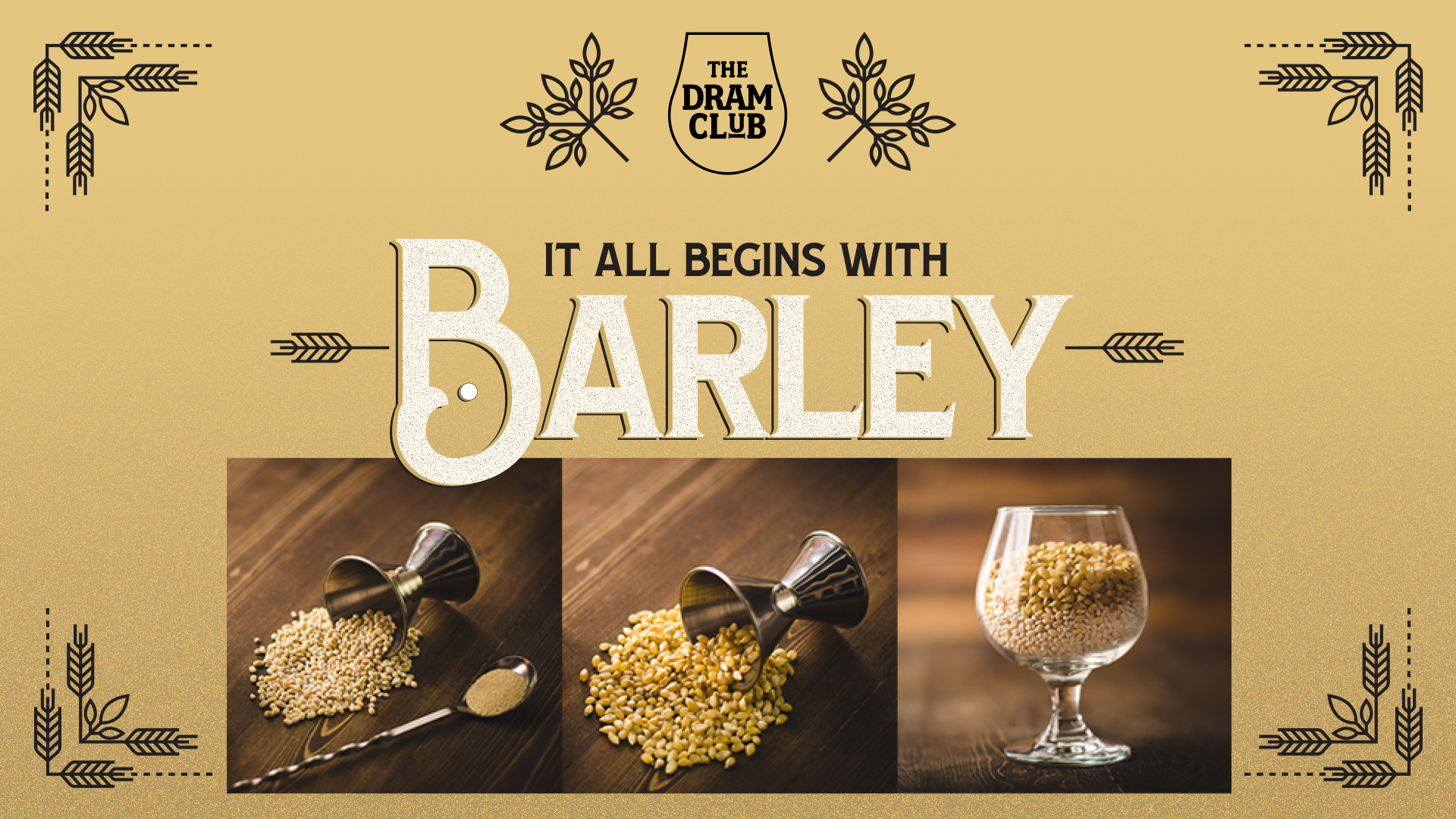
One of the most complex spirits in the world (yes, whisky) is made from only four key ingredients - grain, yeast, water and time (and more often than not, a lot of it).
Depending on the grain the distiller chooses – barley, wheat, corn, rye – one gets a particular style of whisky. For example when 51% corn is used it’s a Bourbon, when 51% rye is used it’s a Rye Whiskey and when 100?rley is used it is called a malt whisky.
A Scotch whisky can only be called a malt whisky when the distiller uses 100% malted barley. In fact, strict Scottish regulations dictate that: ‘Single Malt Scotch Whisky means a Scotch Whisky produced from only water and malted barley at a single distillery by batch distillation in pot stills.’
Why barley? Good question!
Why Barley?
Long before “local” became a buzzword, producers – irrespective of whether they were making whisky in Scotland or mezcal in Mexico – had to rely on raw material that was abundantly available in their vicinity. Challenging weather conditions in Scotland meant that the most hardy grain to thrive in that landscape was barley. And so, it became the most widely used grain and the natural choice for whisky in Scotland. Barley is also an easier grain to ‘malt’ than others and this too went a long way in it becoming the signature grain and style for malt whiskies.
Today, fewer than 10 Scottish distilleries conduct their own malting, Balvenie, Bowmore, Highland Park, Laphroaig and Springbank amongst them. And irrespective of where the barley comes from, maltsters have very firm ideas on what defines the quality of barley:
· High starch content (as it yields more alcohol)
· Low protein content (lower the protein, higher the starch, and thus more alcohol)
· Low nitrogen content (low nitrogen = low protein, and you get the idea)
· High likelihood of germination
· Easy to mill and mash
· Well-ripened, plump and dry
Varieties of Barley
Until the 1950s only two barley varieties dominated the market: Spatt Archer and Plumage Archer. Then several hybrid varieties began to appear. Each was superseded by further new varieties that yielded increased alcohol levels and could withstand weather and disease.
There are nearly 5,500 strains of barley, of which only 10 have been approved for making Scotch malt whisky. All 10 strains were developed from the same original barley (Hordeum distichon) and so changing the variety is broadly not considered to have an effect on flavour.
The popular argument is that distilling involves such high level of alcohol that any individual barley flavour might disappear in the process. Needless to say, there are also those who hold the view that the older, low-yielding barley strains such as Golden Promise do have an impact on the spirit’s texture. Distilleries such as Bruichladdich and Springbank in fact make a pretty big deal about the provenance of their grain.
A boost from science
Taking a stroll away from Scotland, there is a whole other world of makers who use barley in their whisky… albeit with different rules. In fact, American whiskeys as an example only need to use 51?rley in their mash to be called a malt.
Several distillers are excited by the idea of how attention to a raw ingredient can change the idea of whiskey making. How the complexity of a whisky can be influenced by more than increasing the age or changing the cask.
Recently, barley experimentation got a boost from genetic science. A group of US researchers have successfully mapped the barley genome! An exercise that took nearly a decade now shows how to grow a better grain. Will this unlock secrets to deeper-rooted changes?
What do you think?